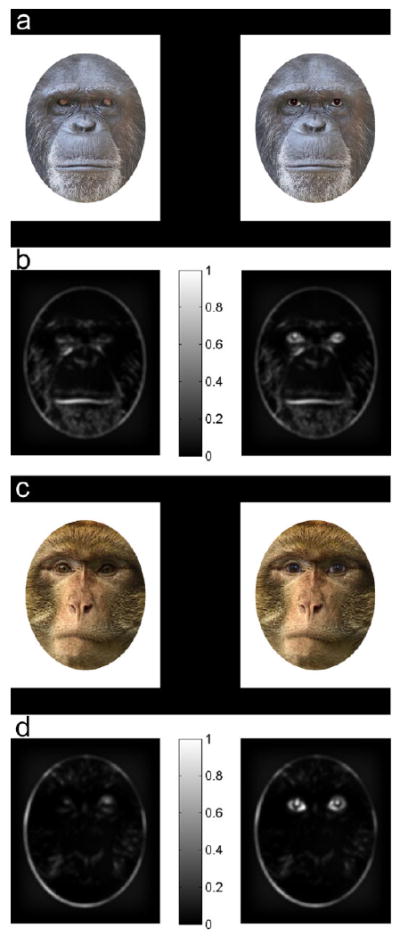Figure 1.

Experimental stimuli (a, c) and their averaged saliency maps (b, d). Chimpanzee (a) and Barbary macaque (c) faces with their original eyes and human eyes were prepared using Adobe Photoshop 12.0. Inserting human eyes resulted in a slight but significant increase of luminance in the eye region compared to non-human primate faces with original eyes (23.36 candela/m2 for NonHumanEyes-face vs. 25.17 candela/m2 for HumanEyes-face, t(5) = 3.02, p < .05). Luminance values were estimated for each face on the basis of spectrophotometric measurements of screen emittance (SpectraScan PR650, PhotoResearch). With respect to contrast, the effect of inserting human eyes into a non-human primate face is illustrated here by the Chimpanzee (b) and Barbary macaque (d) saliency maps, expressed in arbitrary units normalized for the maximum saliency found over the set of stimuli (Ho Phuoc, Guyader, & Guérin-dugué, 2010). As shown, inserting human eyes into non-human primate faces resulted in a significant increase of contrast in the eye region where saliency for each pair was, on average, multiplied by 2.8 compared to stimuli with original eyes (t[5] = 6.81, p < .005).1
